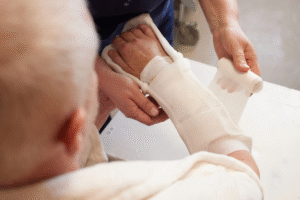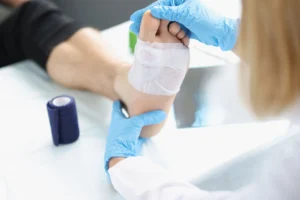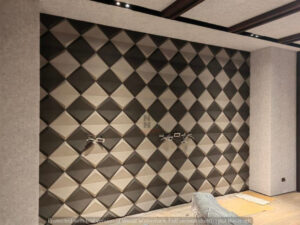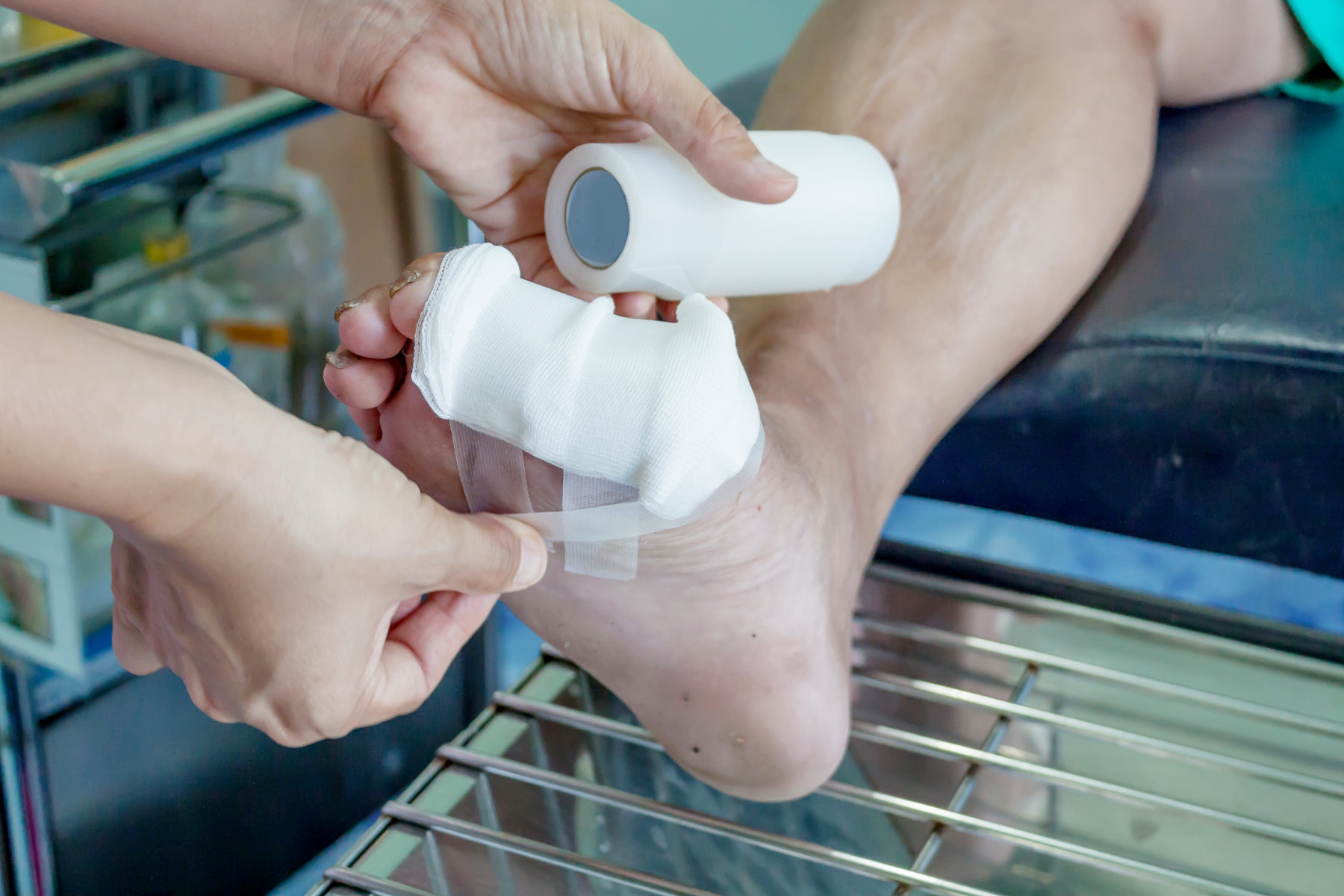Diabetic foot ulcers are one of the most serious complications faced by people with diabetes. These open wounds, often found on the soles or toes, can easily become infected and lead to life-threatening conditions if not managed properly. One of the most critical components of diabetic wound treatment is the proper use of Wound Care Dressings. These specialized dressings not only help accelerate healing but also protect against the risk of infection, which is particularly high among diabetic patients.
At Kalingap Wound Care Clinic, the best provider of diabetic wound care in Makati City and across Metro Manila, advanced and personalized care is available for every Filipino. With professional guidance, modern techniques, and genuine compassion, Kalingap Wound Care Clinic uses expertly chosen Wound Care Dressings to manage and treat diabetic foot ulcers effectively and safely.
What Are Diabetic Foot Ulcers?
Diabetic foot ulcers are open sores or wounds that typically develop on the feet of people living with diabetes. These ulcers are often the result of multiple factors, including poor circulation, peripheral neuropathy (nerve damage), and prolonged high blood sugar levels. Because diabetics may not feel foot injuries due to nerve loss, small wounds often go unnoticed and untreated—allowing them to worsen.
These wounds are notoriously difficult to heal. Poor blood flow limits oxygen delivery, high blood sugar impairs immune response, and reduced sensation increases the risk of repeated trauma. Without timely treatment and the proper application of Wound Care Dressings, diabetic foot ulcers can lead to infection, tissue death, hospitalization, and in severe cases, amputation.
How Wound Care Dressings Support Diabetic Ulcer Healing
Wound Care Dressings play a central role in managing diabetic foot ulcers. The goal of these dressings is not only to protect the wound from outside contaminants but also to create an ideal healing environment within the wound bed.
These dressings help:
- Maintain optimal moisture levels, which is essential for promoting tissue regeneration and preventing the wound from drying out
- Absorb exudate, or wound fluid, which may contain harmful bacteria and enzymes that delay healing
- Protect the wound from infection, acting as a barrier against microbes and foreign particles
- Support debridement, helping to remove dead or infected tissue
- Encourage new tissue growth, aiding granulation and epithelialization stages
At Kalingap Wound Care Clinic, each patient undergoes a comprehensive assessment to determine the most suitable Wound Care Dressings for their unique ulcer type and healing stage. This precision in wound management leads to better results and fewer complications.
Dressing Types Used for Diabetic Foot Ulcers
There is no one-size-fits-all solution for diabetic wounds. That’s why Kalingap Wound Care Clinic offers a wide range of Wound Care Dressings, each selected to meet the specific needs of the wound.
Foam Dressings
These are highly absorbent and ideal for ulcers with moderate to heavy drainage. They provide cushioning and reduce friction, making them perfect for plantar ulcers.
Hydrocolloid and Hydrogel Dressings
These help maintain a moist wound environment and are excellent for wounds that are dry or have minimal exudate. They also assist in autolytic debridement, which breaks down necrotic tissue without harming healthy skin.
Antimicrobial Dressings
For ulcers at high risk of infection, dressings infused with silver or iodine are used. These help kill bacteria within the wound and prevent biofilm formation.
Alginate and Composite Dressings
These dressings are beneficial for deeper or tunnel-like ulcers. Alginates absorb high levels of exudate and promote clotting, while composite dressings combine layers for protection, moisture control, and infection prevention.
Each type of Wound Care Dressings used at Kalingap Wound Care Clinic is carefully chosen to ensure maximum healing efficiency, patient comfort, and infection control.
Kalingap Wound Care Clinic’s Approach to Diabetic Ulcer Management
Kalingap Wound Care Clinic takes a holistic and patient-centered approach to diabetic foot ulcer care. Led by Dr. Lou Mervyn Tec, a board-certified orthopedic surgeon and wound care specialist, the clinic combines science, skill, and compassion in every treatment plan.
The clinic begins with an in-depth evaluation of the wound, considering factors such as ulcer depth, level of infection, blood flow, and patient mobility. From this assessment, the most appropriate Wound Care Dressings are selected.
Along with traditional dressings, Kalingap Wound Care Clinic also employs advanced techniques such as:
- Negative Pressure Wound Therapy (VAC) to remove exudate and improve blood circulation
- Compression Therapy for managing venous ulcers associated with diabetes
- Ultrasonic-Assisted Debridement to gently remove dead tissue
- Custom footwear and pressure offloading, reducing the risk of trauma while healing
These evidence-based strategies, combined with properly applied Wound Care Dressings, ensure faster healing and fewer complications.
Preventing Recurrence and Complications
Healing a diabetic foot ulcer is only half the journey—the other half is preventing it from returning. Recurrence is common if preventive measures aren’t taken, which is why Kalingap Wound Care Clinic educates patients and caregivers on long-term care.
Even after the wound is closed, continued use of specialized Wound Care Dressings can protect vulnerable skin, especially in high-friction or high-pressure areas. Regular foot inspections, proper footwear, and blood sugar control are also critical parts of ongoing care.
Kalingap Wound Care Clinic empowers patients through education, providing practical advice on foot hygiene, early warning signs of skin damage, and how to change Wound Care Dressings at home when necessary. This proactive support dramatically reduces the risk of future ulcers and complications.
Why Wound Care Dressings Are Essential in Diabetic Foot Care
Diabetic foot ulcers demand a level of care that goes beyond basic wound cleaning. Without the correct Wound Care Dressings, wounds can become chronic, painful, and life-threatening. These dressings support every stage of the healing process, from keeping the wound moist and clean to preventing infections and promoting new tissue growth.
The strategic application of Wound Care Dressings is what makes diabetic wound management successful. At Kalingap Wound Care Clinic, patients receive expert-led care, access to modern dressing technology, and personalized wound plans. That’s why countless individuals across Makati City and Metro Manila trust Kalingap Wound Care Clinic with their recovery and long-term health.
Takeaway
Proper management of diabetic foot ulcers is critical to preventing serious complications such as infection, hospitalization, or even amputation. At the heart of effective diabetic wound care are high-quality, purpose-driven Wound Care Dressings. These dressings don’t just cover a wound—they actively support healing, prevent infection, and protect delicate tissue during every phase of recovery.
With the expert guidance and compassionate care provided by Kalingap Wound Care Clinic, patients receive the right Wound Care Dressings tailored to their unique needs. From advanced dressing technologies to ongoing education and personalized treatment plans, Kalingap Wound Care Clinic stands as the most trusted wound care provider in Makati City and across Metro Manila.
Frequently Asked Questions (FAQs)
What is the best Wound Care Dressing for diabetic foot ulcers?
The best dressing depends on the ulcer’s size, depth, drainage, and infection risk. Foam, hydrocolloid, antimicrobial, and alginate dressings are commonly used. Kalingap Wound Care Clinic will select the ideal dressing based on a thorough wound assessment.
How often should Wound Care Dressings be changed for diabetic ulcers?
Some dressings can stay in place for several days, while others require daily changes. The frequency depends on the wound’s drainage, signs of infection, and dressing type. Kalingap Wound Care Clinic will provide a specific schedule tailored to each case.
Can diabetic foot ulcers heal with dressings alone?
Wound Care Dressings are essential, but comprehensive care—including infection control, blood sugar management, and proper footwear—is also necessary. Kalingap Wound Care Clinic provides full-spectrum treatment to support total healing.
What are signs that my diabetic foot ulcer is infected?
Signs include increased redness, swelling, warmth, pus, foul odor, or worsening pain. If any of these symptoms appear, visit Kalingap Wound Care Clinic immediately for expert care.
Why is Kalingap Wound Care Clinic the best choice for diabetic wound care?
Kalingap Wound Care Clinic offers specialized wound care guided by a certified expert, modern dressing options, and a compassionate approach rooted in Filipino values. Patients receive personalized care plans that ensure the best outcomes for diabetic foot ulcer recovery.











